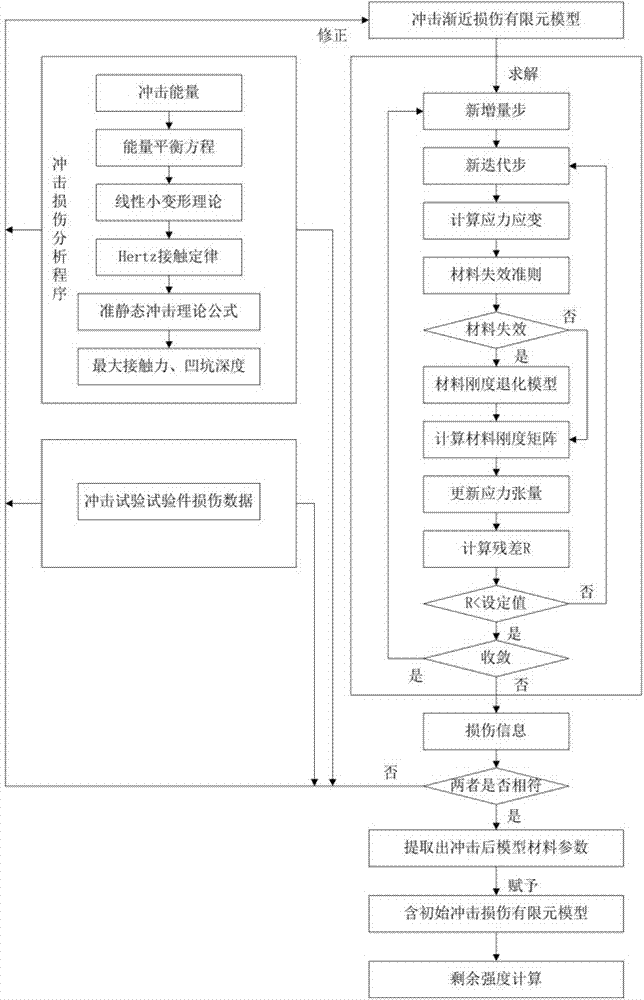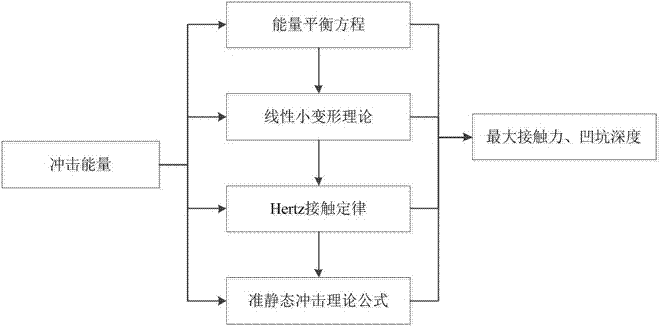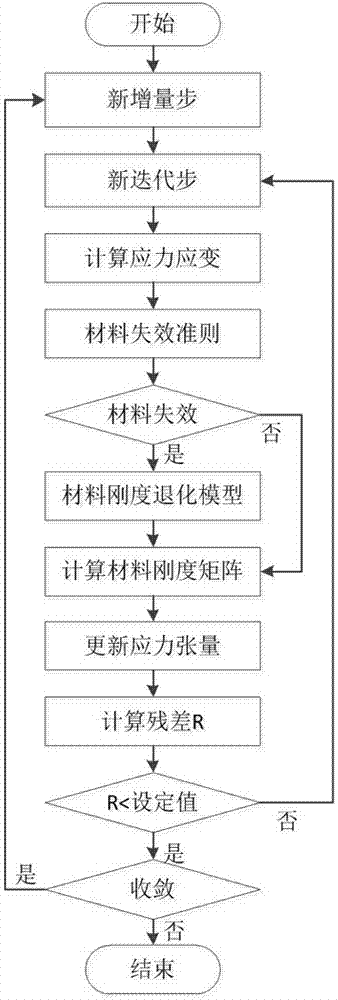Method for assessing residual intensities of composite material structures with low-speed impact damage
A low-velocity impact damage and composite material technology, applied in special data processing applications, instruments, electrical digital data processing, etc., can solve the problem of not being able to truly reflect material damage, process discontinuity, and affecting the accuracy of residual strength calculations, etc. question
- Summary
- Abstract
- Description
- Claims
- Application Information
AI Technical Summary
Problems solved by technology
Method used
Image
Examples
Embodiment Construction
[0032] The present invention will be further described in detail below in conjunction with the drawings and specific preferred embodiments.
[0033] Such as figure 1 As shown, a method for evaluating the residual strength of a composite material structure containing low-velocity impact damage includes the following 6 steps.
[0034] Step 1. Low-speed impact test.
[0035] For multiple identical test pieces, conduct impact tests under different large impact energies, and use non-destructive testing methods to detect impact damage caused by large impact energy, and record the damage characteristic parameter 1. Then, according to the low-speed impact test results, The curve relationship between impact energy and damage characteristic parameter one is obtained.
[0036] Among them, the above-mentioned damage characteristic parameter one includes pit diameter, pit depth and delamination damage area, etc.; the above-mentioned large impact energy means that the impact damage size generated b...
PUM
 Login to View More
Login to View More Abstract
Description
Claims
Application Information
 Login to View More
Login to View More - R&D
- Intellectual Property
- Life Sciences
- Materials
- Tech Scout
- Unparalleled Data Quality
- Higher Quality Content
- 60% Fewer Hallucinations
Browse by: Latest US Patents, China's latest patents, Technical Efficacy Thesaurus, Application Domain, Technology Topic, Popular Technical Reports.
© 2025 PatSnap. All rights reserved.Legal|Privacy policy|Modern Slavery Act Transparency Statement|Sitemap|About US| Contact US: help@patsnap.com



